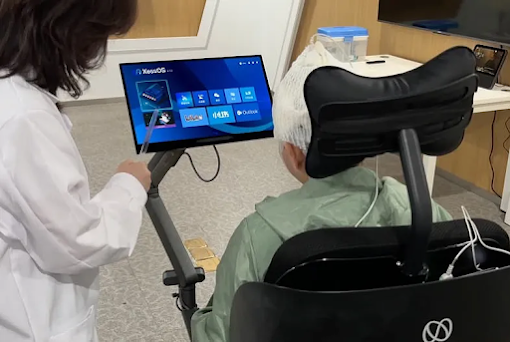World’s First Mind-to-AI Large Model Dialogue
Decoding Chinese Speech with Brain-Computer Interface in real-time from brain signals
A Chinese startup has achieved a groundbreaking milestone in the field of brain-computer interface (BCI) technology, successfully decoding Chinese speech in real-time from brain signals.
This breakthrough has the potential to revolutionize the lives of individuals with speech impairments and open up new avenues for human-computer interaction.
Bridging the Gap Between Brain and Machine
BCI technology allows for direct communication between the brain and external devices, bypassing the need for traditional physical interfaces like keyboards or voice commands.
This is achieved by implanting a device that records brain signals, which are then decoded by sophisticated algorithms to understand the user’s intentions.
Decoding Chinese Speech
A Complex Linguistic Challenge
The recent breakthrough by NeuroXess, a Shanghai-based startup, focused on decoding Chinese speech, a particularly complex task due to the language’s unique characteristics. Unlike alphabetic languages like English, Chinese is monosyllabic, tonal, and logographic, requiring the use of more brain regions for processing.
AI’s Crucial Role
Training Neural Networks to Understand Brain Signals
Artificial intelligence (AI) plays a vital role in deciphering the complex neural patterns associated with speech. NeuroXess researchers trained a neural network model using electrocorticogram (ECoG) features extracted from the high-gamma band of brain signals. This high-frequency band (70-150 hertz) is known to correlate with complex cognitive functions, including movement and sensory information, making it ideal for decoding intentions.
Clinical Trials Show Promising Results
In a clinical trial, a patient with a tumor in the language area of the brain received a 256-channel BCI implant. Within five days, the patient achieved 71% speech decoding accuracy using 142 common Chinese syllables, with a decoding latency of under 100 milliseconds per character. This marks the highest level of real-time Chinese speech decoding achieved in China.
Beyond Speech Expanding the Possibilities of BCI
The potential applications of BCI technology extend far beyond speech decoding. NeuroXess’s BCI device has also been successfully used to control software, operate smartphones, control smart home systems, and even maneuver a wheelchair, all through brain signals. In another clinical trial, a patient with a brain injury used the BCI to control robotic hands, grasp objects, and even perform sign language.
The company envisions a future where BCI technology empowers individuals with speech or motor function disabilities resulting from conditions like Amyotrophic Lateral Sclerosis (ALS), high-level paraplegia, and stroke.
Mind-to-AI Dialogue A Glimpse into the Future
Perhaps the most exciting prospect is the potential for direct communication between the human mind and AI models.
NeuroXess has demonstrated the world’s first "mind-to-AI large model" dialogue, where a patient used the BCI to control a digital avatar and interact with an AI model. This breakthrough opens up possibilities for seamless integration between human thought and advanced AI systems.
While BCI technology is still in its early stages, these recent advances demonstrate its immense potential to transform human lives and redefine the boundaries of human-computer interaction. The future holds exciting possibilities as AI continues to play a critical role in unlocking the secrets of the human brain and translating thoughts into actions.




.png)



No comments:
Post a Comment